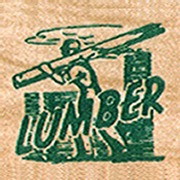Specialty Siding: the Different Types Explained by Huber Lumber

There is a variety of reasons to consider putting siding on a home, but the most common reason is that proper, quality siding can eliminate the stress and expense of repainting a house every few years. Specialty siding, particularly vinyl siding, has made great strides in the quality of materials and range of colors and patterns. Selecting a siding can involve a variety of decisions: horizontal or vertical, textured or smooth, width size, trim and more. Below, the team at Huber Lumber Co explains the differences between three types of specialty siding.
Vinyl: Available since the 1960’s and currently the most commonly used siding in new homes, vinyl siding is usually made from PVC and is considered a “green” siding because of its production and recycling capabilities. It’s economical, widely available, and durable, but it’s also flammable, cannot be painted, and requires an entire section to be replaced if there is damage.
Fiber Cement: Thicker than vinyl siding, fiber cement siding is made from wood fibers mixed with sand and cement and is considered a low maintenance option. The benefits to fiber cement are its high water resistance, ability to be painted in many colors or textures, and its resistance to termites. The downsides are the cost and a more complicated installation.
Insulated Siding: This is essentially vinyl siding but with an added layer of insulation glued inside, which helps create a barrier to prevent heat loss. While insulated siding does cost more than standard vinyl, it lays flatter and reduces outside noise.
For more information on specialty siding options in the area, as well as kitchen design, decks, porches, and kitchen cabinets, call Huber Lumber at (513) 713-4035.
About the Business
Have a question? Ask the experts!
Send your question

